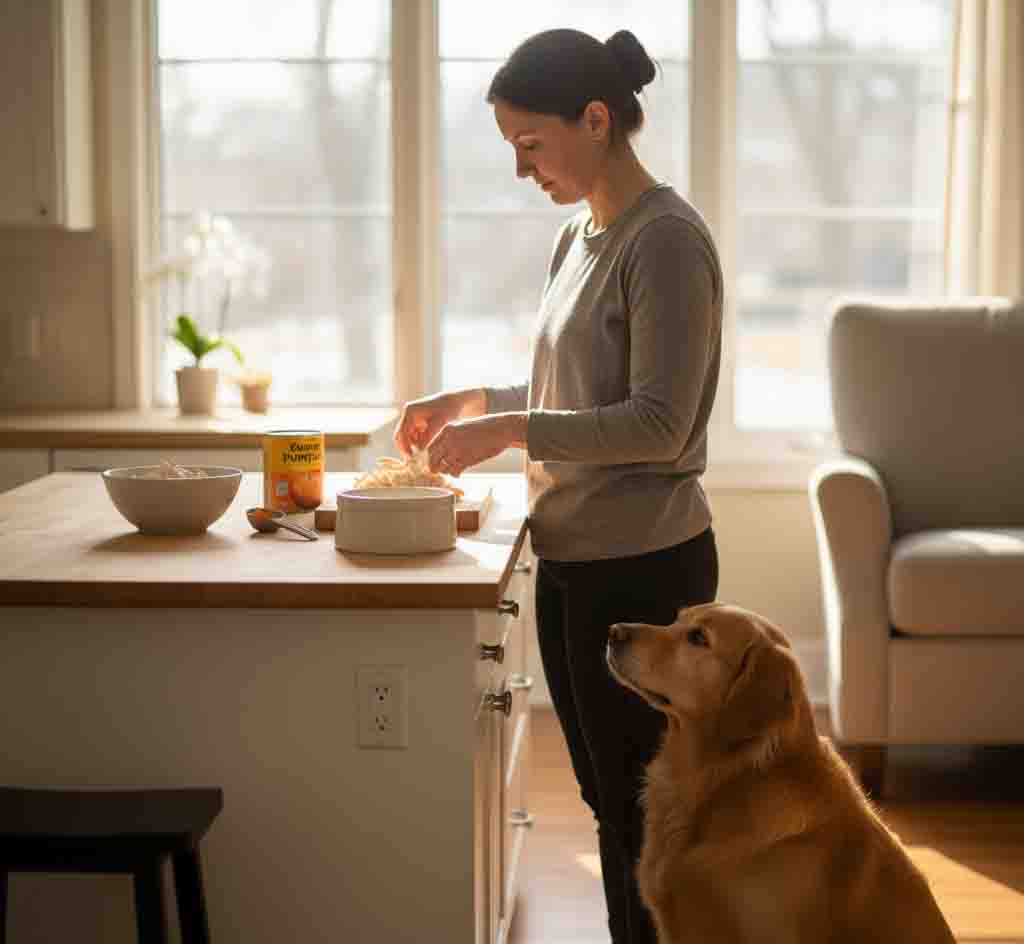I’ll never forget the first time I saw my new rescue dog, Milo, perform his elaborate bedtime ritual. He’d circle the rug three times, paw at it frantically as if digging to China, and then flop down with a dramatic, world-weary sigh. My first thought was, “What in the world is he doing? Is my rug not soft enough?”
I later discovered Milo wasn’t being dramatic or critiquing my home decor. He was simply being a dog. That circling instinct is a primal behavior inherited from his wild ancestors, who would trample down grass to create a safe, comfortable sleeping spot. The pawing was his way of fluffing up his “nest.” He wasn’t complaining; he was following an ancient program written in his DNA.
Our pets are constantly communicating with us, not with words, but through their actions. Learning to interpret these strange habits is one of the most rewarding parts of pet ownership. This guide will help you understand the meaning behind some of the most common—and puzzling—behaviors.
1. The Head Tilt That Melts Your Heart
What you see: Your dog cocks his head to the side while you’re talking, in an impossibly cute pose.
What it really means: This isn’t just about being adorable; it’s a sign of active listening. Dogs tilt their heads to adjust their ear flaps (pinnae), helping them better locate the source and tone of a sound. They’re also intently studying your facial expressions and mouth movements. It’s their way of saying, “I’m concentrating and trying to understand you!”
Pro Tip: Notice if your dog tilts his head more at specific words, like “walk” or “treat.” This shows he’s making positive associations and is highly engaged.
2. The “Gift” of a Dead (or Nearly Dead) Creature
What you see: Your cat proudly presents you with a mouse, bird, or insect, often placed in a prominent spot like your pillow.
What it really means: While unsettling, this is a behavior rooted in affection and instinct. In the feline world, this “gift” can mean one of two things:
-
They are teaching you to hunt: Your cat may perceive you as a clumsy, unskilled hunter and is trying to show you the ropes.
-
They are sharing resources: They are presenting you with what they consider a valuable offering, treating you as a valued member of their family.
Instead of scolding, a simple “thank you” and discreet cleanup is the best response. You can help reduce this behavior by keeping your cat indoors and providing plenty of interactive toys to satisfy their hunting drive.
3. The 3 AM “Zoomies” (Frenetic Random Activity Periods)
What you see: Your cat suddenly transforms into a blur of speed at 3 AM, racing up curtains and across furniture as if possessed.
What it really means: These bursts of energy, officially known as Frenetic Random Activity Periods (FRAPs), are completely normal. Cats are crepuscular, meaning their natural peak activity hours are at dawn and dusk. That late-night sprint is simply their innate rhythm kicking in. It’s also a primary way they release pent-up energy.
Pro Tip: To curb 3 AM zoomies, schedule a vigorous 10-15 minute play session with a wand toy or laser pointer right before your bedtime. This helps tire them out and sync their sleep cycle more closely with yours.
4. The Bedtime “Nesting” Ritual
What you see: Your dog circles, scratches, or digs at their bed or your rug before lying down.
What it really means: As with Milo, this is a deep-seated instinct. Wild canines did this to check for predators, clear away debris, and create a comfortable, temperature-regulated spot to sleep. The dramatic sigh upon lying down is often a sign of contentment and settling in for a restful sleep.
When to Worry: Behaviors That Signal a Problem
While most quirky habits are harmless, some can be red flags for underlying health or behavioral issues. Consult your veterinarian if you notice:
-
Sudden Changes: Any abrupt shift in behavior is worth investigating.
-
Repetitive Compulsions: Constant circling, licking, or chewing (especially if it causes injury) can indicate anxiety, allergies, or pain.
-
Loss of Housetraining: A previously reliable pet having accidents could signal a Urinary Tract Infection (UTI) or other medical problem.
-
Unexplained Aggression: Growling, snapping, or hiding can be a sign that your pet is in pain or feels threatened.
The key is to know your pet’s “normal.” Milo’s bedtime circles are part of his routine. If he started circling obsessively and couldn’t settle, that would be a cause for concern.
Your FAQs: Answered
Q: Why does my dog follow me everywhere, even to the bathroom?
A: This is typically a sign of a strong bond and your dog’s “pack” mentality. They see you as their leader and feel most secure by your side. It can also be a learned behavior—where you go, good things (like attention or food) often happen.
Q: Why does my cat rub against my legs?
A: This is a multi-purpose friendly gesture. Cats have scent glands on their cheeks and heads. When they rub against you, they are mingling their scent with yours, marking you as “family.” It’s also a way of greeting and seeking affection.
Q: My dog eats grass. Is he sick?
A: Occasional grass-eating is normal for many dogs. They may do it to soothe an upset stomach, add fiber to their diet, or simply because they like the taste. However, if your dog is eating grass frantically and vomiting frequently, a vet visit is recommended.
Learning to speak my dog’s behavioral language has profoundly deepened our bond. Now, when Milo begins his bedtime dance, I don’t feel frustration—I feel a connection to his ancient instincts. He’s not being difficult; he’s just being a dog. And that’s exactly who I want him to be.



